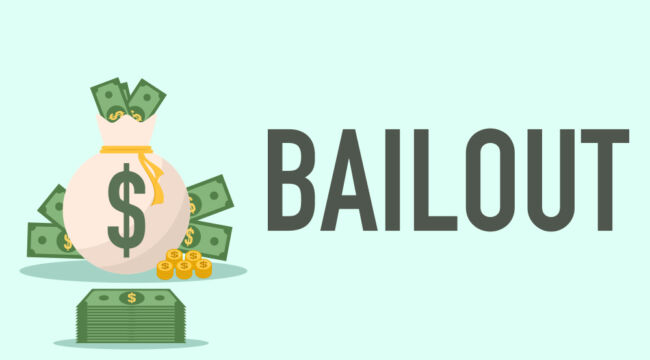Another Billionaire Bailout!
The financial world is today reeling from the failure of Silicon Valley Bank (SVB). SVB was an FDIC insured commercial bank regulated by the State of California and the Federal Reserve System.
On Friday, March 10, the FDIC abruptly closed the bank, moved some deposits to a newly created bank controlled by regulators, wiped out large deposits, and began a process of selling bank assets and gradually repaying creditors.
The big news came out yesterday that all SVB depositors will be made whole. They just tore up the rules and changed them on the fly.
Bank deposit insurance is $250,000 per deposit. If you want to deposit more than that amount of money in the bank, you should open an additional account or accounts, depending on the amount you’re depositing. Otherwise, any money over the $250,000 limit would be at risk if you just held it in one account.
Well, guess what? Over 90% of the deposits in SVB exceeded the insured amount. That means that companies with deposits of over $250,000 were reckless and failed to implement the necessary risk management by parking it all in one place. It’s not as if they weren’t aware of FDIC limit. But they did it anyway.
Roku actually had a $487 million deposit at SVB!
And now they’re getting bailed out. The billionaires and their start-up flunkies will get all their money back, despite their own failure to practice basic risk management.
In an op-ed in the Wall Street Journal, entrepreneur (and presidential candidate Vivek Ramaswamy, cuts to the heart of it all:
The bailout creates incentives for risky behavior, teaching large depositors that they can throw money at risky banks without diversifying or conducting diligence. SVB long lobbied for looser risk limits by arguing that its failure wouldn’t create systemic risk and thus didn’t merit special intervention by the U.S. government. Yet on Sunday, Treasury deemed SVB “systemically important.”
The Bidens and Yellens of the world are saying that it’s not a bailout because no taxpayer money is being used to bail out the depositors. Technically, that’s true. The FDIC will get the funds from its Deposit Insurance Fund. Larger banking institutions will ultimately foot the bill through a special assessment.
But, that doesn’t mean that regular people won’t be paying for the bailout. The banks will simply pass along the additional costs to their customers in the form of higher banking fees. It’s like a shell game, really. And the public always loses.
So Janet Yellen and Joe Biden can sit there and say it isn’t a bailout until they’re blue in the face. But it is a bailout.
Moving beyond the bailout aspect, this story is not a one-day wonder. There will definitely be contagion.
The ripple effects of the SVB collapse will continue for months. In a complex dynamic system such as the banking system and capital markets more broadly, it is impossible to know in advance exactly which firms will fail next, but it is certain that such failures will arise.
Other facets of the SVB collapse are breaking minute-by-minute. It’s reported that top insiders of SVB sold millions of dollars of SVB stock over the course of January and February ahead of the recent disclosures. Did they see this coming?
One of those insiders was on the board of the Federal Reserve Bank of San Francisco. His name abruptly disappeared from the Fed website last Friday. More insider trading by Fed officials?
This is a fast moving story, and I’ll be reporting on it at every step of the way.



Comments: